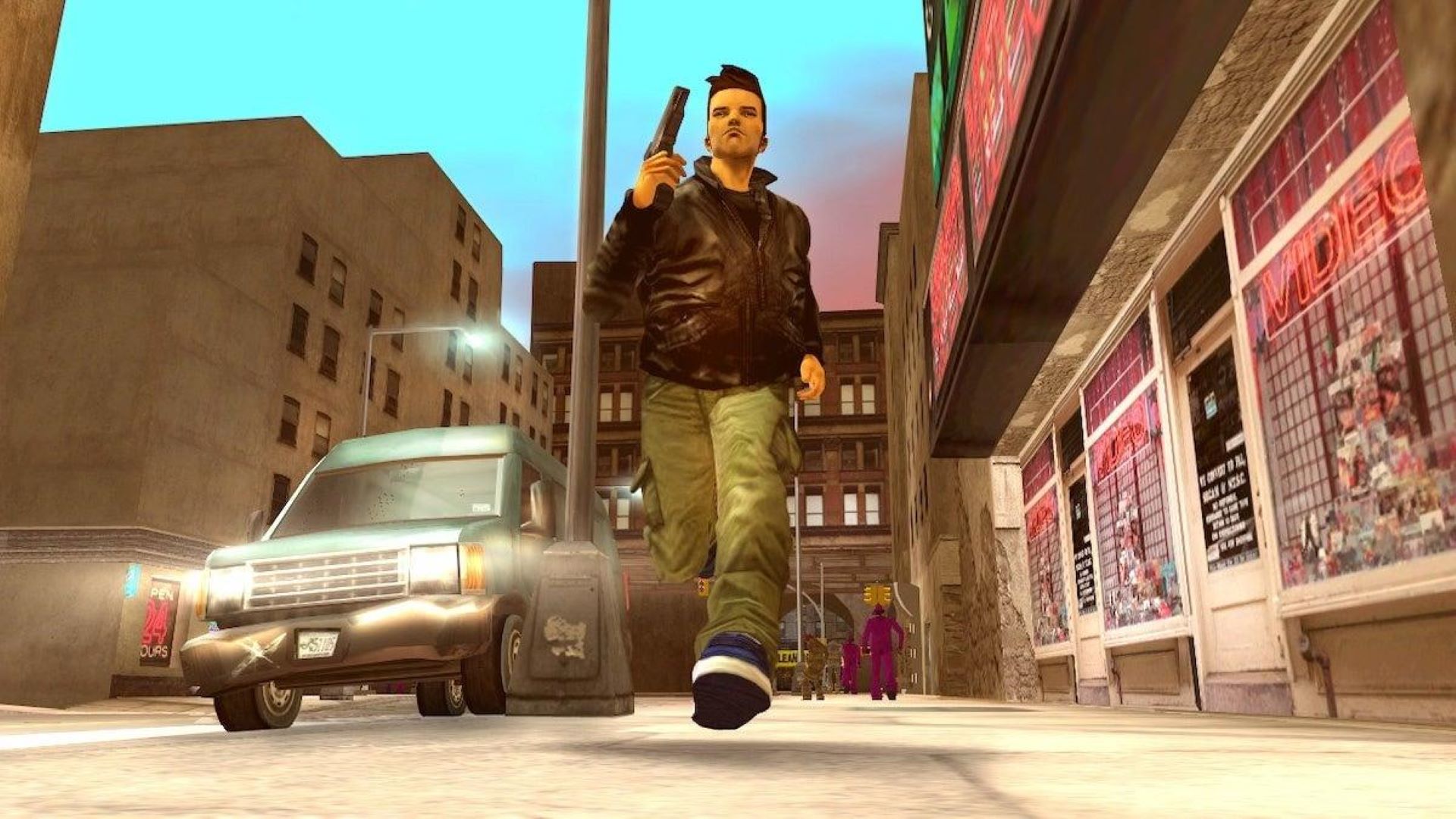
A former GTA 3 developer says Rockstar was forced to slow the player down as they cruised through Liberty City's most densely-populated areas in an attempt to solve the game's "hardest technical challenge."
Former Rockstar developer Obbe Vermeij has taken to Twitter several times over the last few months to talk about the weird technical solutions that were baked into games like GTA 3 and San Andreas. From the mystery of GTA 3's three moons to the laws behind San Andreas' plane crashes and the vehicle programming that recently killed a speedrun attempt, he's offered a rare peek behind Rockstar's curtain.
This time, he's talking about the "hardest technical challenge" that GTA 3's developers had to deal with. One of the biggest and most ambitious open-world games, Vermeij says "there was no way we could fit the whole map of GTA 3 in PS2 memory." To get around that, he says that fellow developer Adam Fowler set to work on "the hardest technical challenge during the development of GTA 3."
There was no way we could fit the whole map of gta3 in PS2 memory. Streaming involves loading models from the DVD as the player moves around. This was the hardest technical challenge during the development of gta3 and was coded by Adam Fowler.The closer models physically are on… pic.twitter.com/EWBb5tyygnApril 25, 2024
As a PS2 game, GTA 3 ran on a disk, and models were loaded (or 'streamed') from the disk as the player moved within range of them. "The closer models physically are on the DVD, the faster they are loaded," Vermeij explains. "This is because the DVD needs to accelerate/decelerate as the head moves to a different track." So Fowler set to work placing models onto the disk as efficiently as possible, arranging them as close together as he could to ensure the fastest-possible loading speed.
But it still wasn't enough, and assets like roads or buildings wouldn't load in properly. Despite Fowler's best efforts, Rockstar reached a point where it couldn't do anything to improve streaming speed any further. Instead, Vermeij says, "we had no option but to slow the player down."
Vermeij points to Portland, the game's most densely-packed island. Early in development, "a big drag running all along the island" represented "a worst case scenario" - players could go fast down this straight road, but the game would be struggling to load in a large number of models. To help out, the artists changed the island's road layout to slow players down. Vermeij doesn't explain exactly how Portland changed, but there's a pair of junctions in the center of the city that seem to bear the scars of that alteration.
Elsewhere, Rockstar was forced to increase the air resistance by 5%, the "hardly noticeable" change for players making a big difference for streaming speed. Improvements made in later games allowed Rockstar to let players go faster, but Vermeij says streaming issues were the reason that there's only a very limited ability to fly in GTA 3. By the time Vice City and San Andreas came around, Rockstar could load in less-detailed versions of buildings for airborne players, helping protect the streaming efforts that Fowler had gone to. But in spite of all that work, it's still possible for the player to outrun Rockstar's open world, which is why you might sometimes find an entirely absent road on a cruise around Liberty City.







